The JOIS 2022 expedition into the Beaufort Sea was going to be the trip of my PhD, and the next three years of research hinged on its success. I’m using a suite of different chemical tracers to investigate several ocean processes. We use nuclear waste released from Europe to understand circulation pathways and timescales in the Canada Basin. Cosmogenic isotopes created by the interaction of the sun with our atmosphere will ‘shed light’ on the ventilation of the very deepest waters in the basin, while other elements released from the weathering of rocks on the continents around the Arctic basin will hopefully allow the quantification of proportions of waters from different sources.
However, issues with background checks resulted in me not knowing if I would be heading to Canada until hours before my flight was due to leave Switzerland. But the most glorious email popped into my inbox at 3.19 am: “You have permission, welcome aboard”.
We flew from St John’s in Newfoundland to Cambridge Bay, Nunavut two days later. The landscape was the rocky tundra, brown and flat as far as we could see. This would be our final time on land for the next four weeks. The CCGS Louis St Laurent sat at anchor in the bay waiting for us, our temporary home and lab.
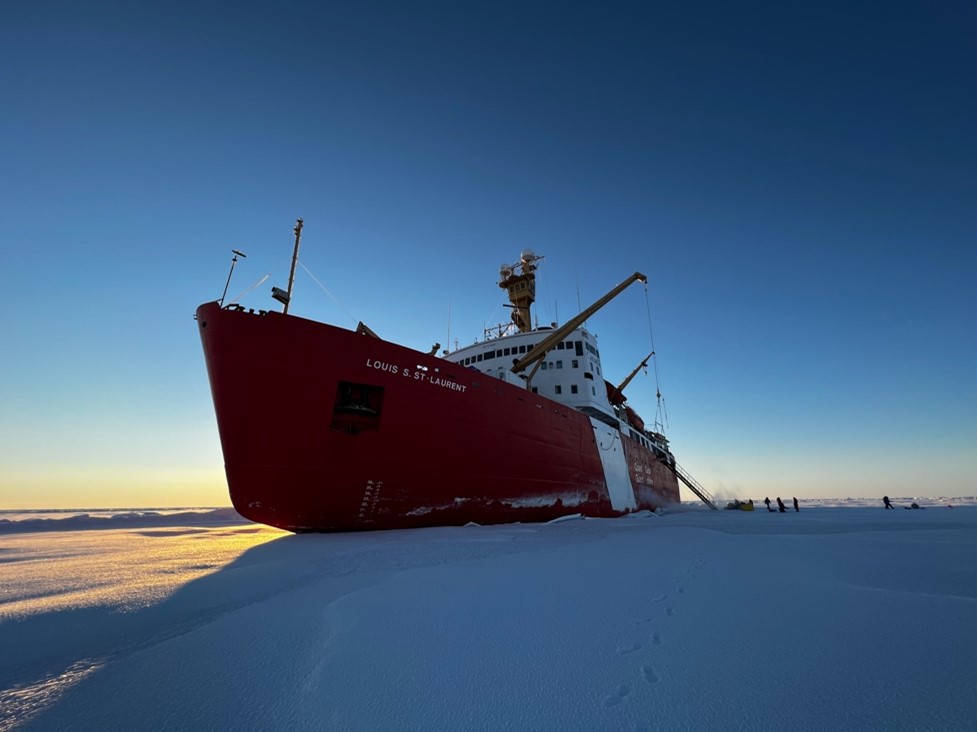
The first week went smoothly. We sampled our first few stations, the CTD rosette delivering that precious water from the depths of the ocean, water that probably hasn’t seen daylight in several hundred years. The engineers had rigged up a wire and separate sampling bottles for me to collect my large volume samples. I needed 20 litres of seawater to measure hafnium as it only occurs in very low concentrations in the oceans. This meant we were hanging off the edge of the ship literally – we were attached with safety harnesses – screwing bottles onto the wire in the dark, with the air so cold hoarfrost was coating every surface, turning the ship a ghostly white.
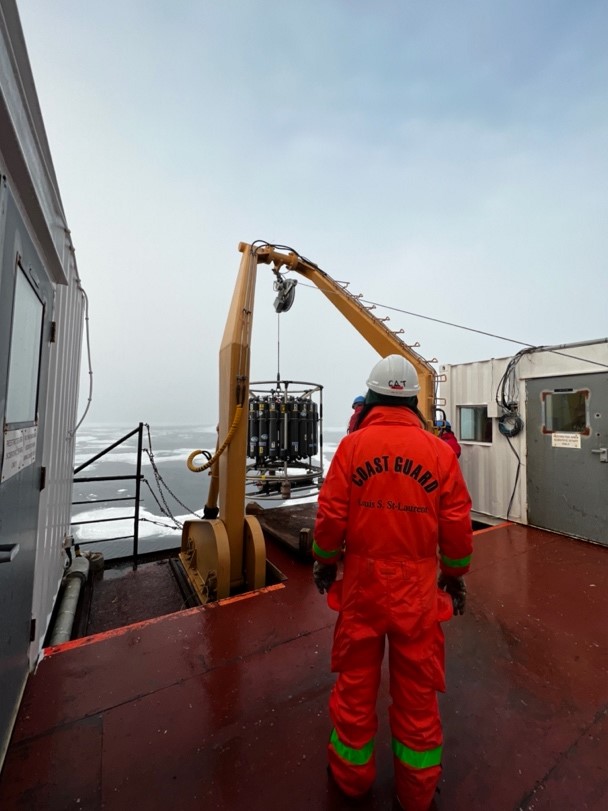
We fell into the rhythm of the night shifts. 11 pm wake up, a quick coffee before heading up to the lab to take over from the day shifters at midnight, sampling, processing, breakfast, the daily science meeting at 11 am, then finally bed at 2 pm. Outside, as we progressed further north, the ocean around us began to change. The open ocean and fog that had surrounded us from the first day gradually gave way to sea ice, in all its different permutations. We had frazil, grease, and pancake ice, which one day gave way to the glorious, thick, multi-year ice and a sunrise that I will never forget. The shades of pink as the sun edged over the horizon, the quiet as I looked out at the expansiveness around me. The shades of blue in the ice as our icebreaker worked its way through, throwing blocks of broken ice onto the surface. This was the Arctic, we were here.
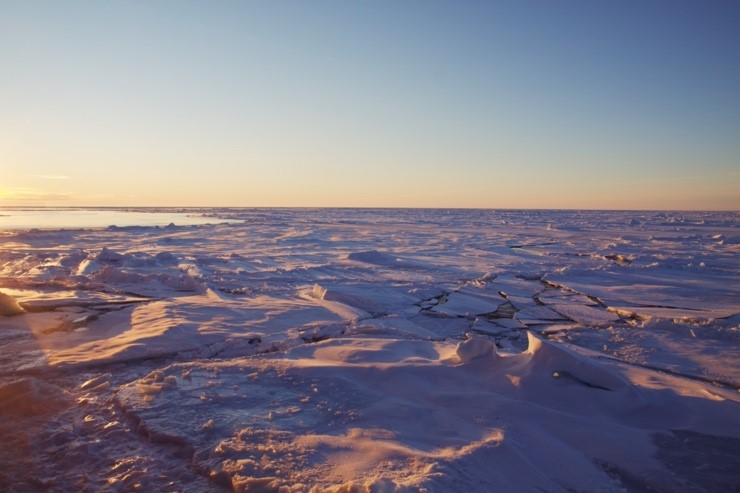
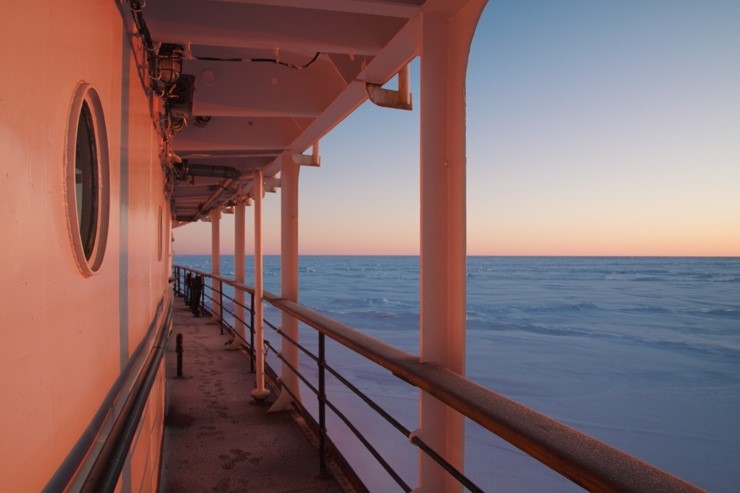
One night at the end of the first week, I tripped on something in the dark. As I landed on the deck in the cold, pain shot through my ankle, and I sat there, panicking. What if I broke it? What if this is it? Do I have to be flown back to land? After the anxiety of possibly not being able to join the ship, was it all going to fall apart now, one week in? Fortunately, it was not broken. Although an MRI back on land later confirmed a badly torn ligament, we bandaged it up, and with my swollen, fantastically blue ankle, I hobbled about the ship.
The rhythm of the nights continued. The CTD made its descent into the darkness, and then a few hours later it returned. We sampled, we processed. But then the sky overhead would explode into shades of green, tinged with pink, and we would drop everything and just stand there, staring up at the show above us.
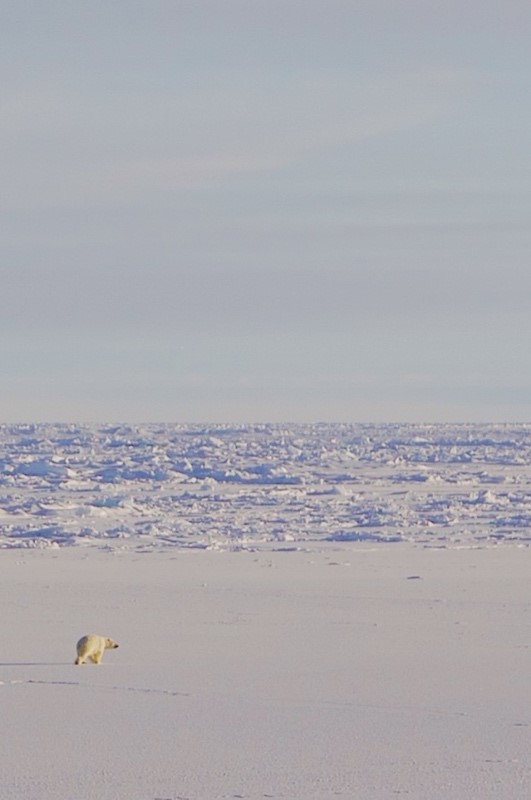
The next three weeks passed in the same way, with the additional excitement of a polar bear sighting, and a medivac in the middle of the night for a crew member with pneumonia. Thankfully, we were near Barrow, Alaska at this point and the US Coastguard airlifted her to the hospital, where we were told a few days later that she was making an excellent recovery.
We finally packed our three huge pallets, with over 1000 litres of water to analyse back in Zurich. We said goodbye to the crew and science team who had become like a second family and to whom every success of the trip can be attributed, and we waited to be helicoptered from the ship to the tiny snow-covered airfield in Kugluktuk. Then, as the plane carried us home over the moonlit snow, the sky put on a show for us one last time. The Arctic truly is otherworldly.
I would like to thank Bill Williams and Sarah Zimmermann in particular, for coordinating the most efficient and well-organised expedition I have had the privilege of being part of. A huge thanks to the captain and crew of the Louis for making my sampling dreams come true with the extra winch and Niskin bottles, and to my fellow night shifters for tolerating the cold and dark to help me get those samples. Special thanks to Anne-Marie Wefing for coming on the expedition, coordinating shipping, and helping sample and process everything. Finally, thanks to the Swiss Polar Institute for providing the funding which enabled me to sample the Canada Basin so comprehensively.
Annabel Payne is a PhD candidate in physical oceanography at ETH Zurich. Her fieldtrip took place in September and October 2022 with the financial support from a Polar Access Fund grant.
Header photograph: The Louis St. Laurent ‘parked’ in the sea ice for a day of ice sampling. © Annabel Payne, all rights reserved